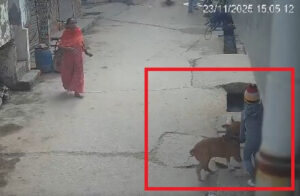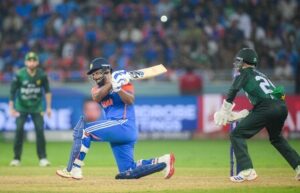Craving for water, Shimla residents pour out anger on social media

Picture for representation
Picture for representation
Shimla : People in Shimla, once a village that served as the summer capital of British India between 1864 and 1939, are craving for a glass of water, while their woes and anger are pouring on micro-blogging platforms, literally!
A majority of localities are facing a severe water supply crisis, getting potable water only once a week.
The reason: All water channels in Shimla and its suburbs, which are normally quenching the thirst of the people, have dried up this summer owing to less snowfall in the past winter and less rains thereafter.
City residents say the problem has aggravated ever since the mercury shot up and the sweeping heat wave across north India led to an influx of tourists to this popular destination to seek refuge in its cooler climes and they drained out the water.
“Today every Shimlitie is crying for a glass of water,” B.D. Sharma, a former Press Secretary to the Chief Minister, said.
“People from various walks of life are making protest in one way or the other and bigwigs holding meetings to provide water to the people. But from where? Not only in Shimla but in its suburbs all water sources have dried up,” he wrote on his Facebook page.
He said he remembered that there were a number of natural water resources in Shimla about four decades ago but they dried up due to unplanned development and haphazard construction.
Echoing Sharma’s assertions, veteran journalist Rakesh Lohumi said “all those who raised illegal buildings, politicians have been repeatedly bringing policies to regularise them, burdening the hills way beyond the carrying capacity, are responsible for the water crisis.”
He said the British ensured full protection of water sources by severely restricting human activity in the catchment areas and maintaining a healthy forest cover.
They preserved the green cover over the Shimla ranges so well that perennial springs spouted from the foot of almost every hill. Most of them have been buried under multi-storied structures or dried up over the past three decades, Lohumi added.
Even tourists are feeling the pinch of water shortage.
“There is no water in the taps. I am charged Rs 200 for a bucket of water by my hotel,” Ranjan Chatterji, a tourist from Kolkata, told IANS.
He said this was the first tourist place where a visitor is charged money for water.
Shimla-based historian Raaja Bhasin said in the 1940s there was a proposal to create an artificial lake in Shimla.
“Not only (lake) for beauty, but also to handle situations like this,” he added.
The crisis of drinking water in the state capital is becoming more serious and chaotic with each passing day, remarked former state Director General of Police I.D. Bhandari.
“The fighting is going on in the absence of chief (the Mayor) responsible for the same, as…has to see how things are working so well in another ancient country China,” he wrote in a post.
While Shimla residents are grappling with water woes — not exactly for the first time — civic body Mayor Kusum Sadret of the Bharatiya Janata Party, which is helming the Municipal Corporation for the first time in three decades since June 2017, is away in China on an official tour.
Resident Jyoti Sharma said it is well known that the depleted water table at a source can be recharged by allowing water to seep in using rainwater harvesting infrastructure.
“Yes, a collective multi-pronged approach towards a sustainable solution is the need of the hour. Else, ‘Shimla left high and dry’ will stop making news,” she added.
Retired bureaucrat K.R. Bharti, who is also settled here, said the previous municipal body was shown the door on the issue of water and the present body might meet the same fate for the same reason.
Civic authorities say water shortage has become more acute after supply from the Ashwani Khad was stopped in 2015 following an outbreak of jaundice, which claimed over 20 lives, due to mixing of sewage from a nearby treatment plant with the natural water supply scheme that catered to Shimla residents.
Shimla’s normal demand of water is 42 to 45 million litres per day (MLD) but the availability ranged from 23 to 25 MLD, says the civic body.
It blames leaks in the distribution network, a significant portion of which came up in the British days, and diminishing water resources due to over-exploitation.
Published on May 28, 2018 at 16:56 IST
IANS





